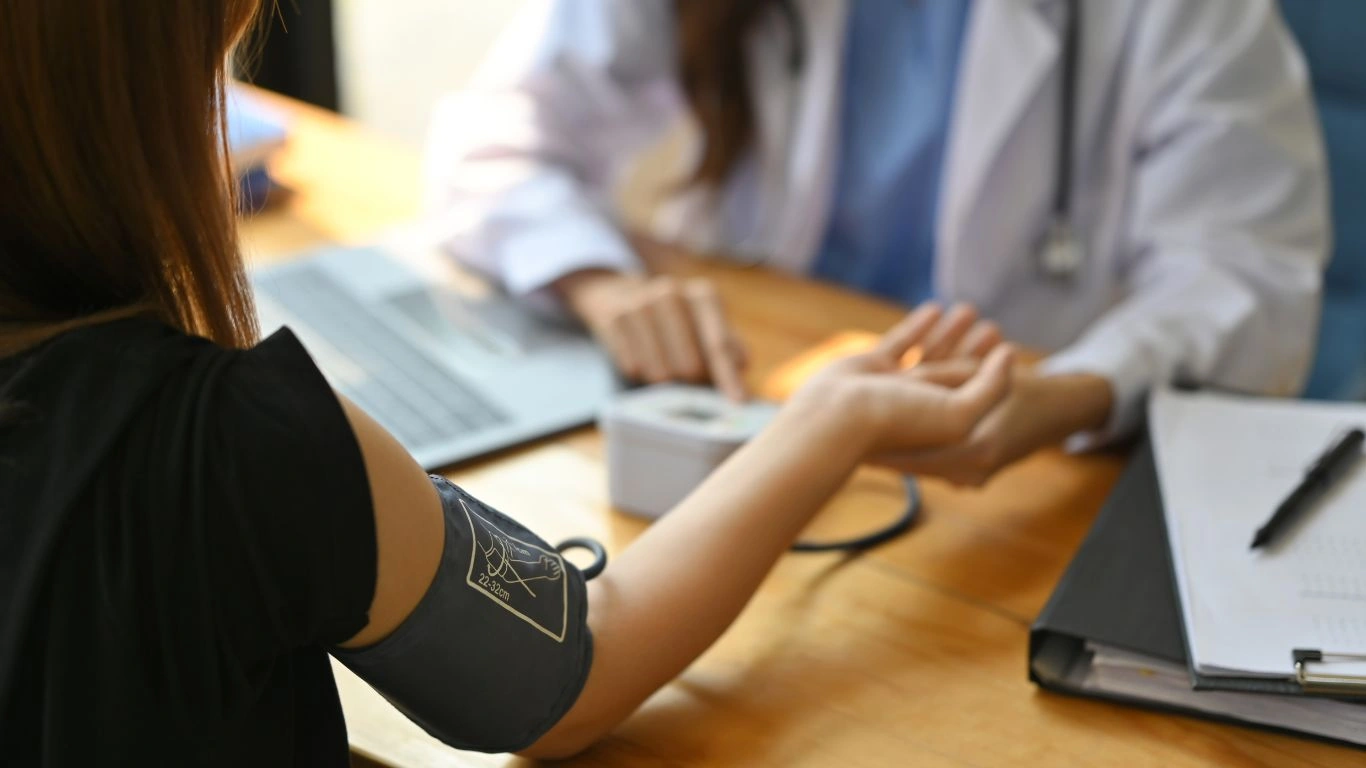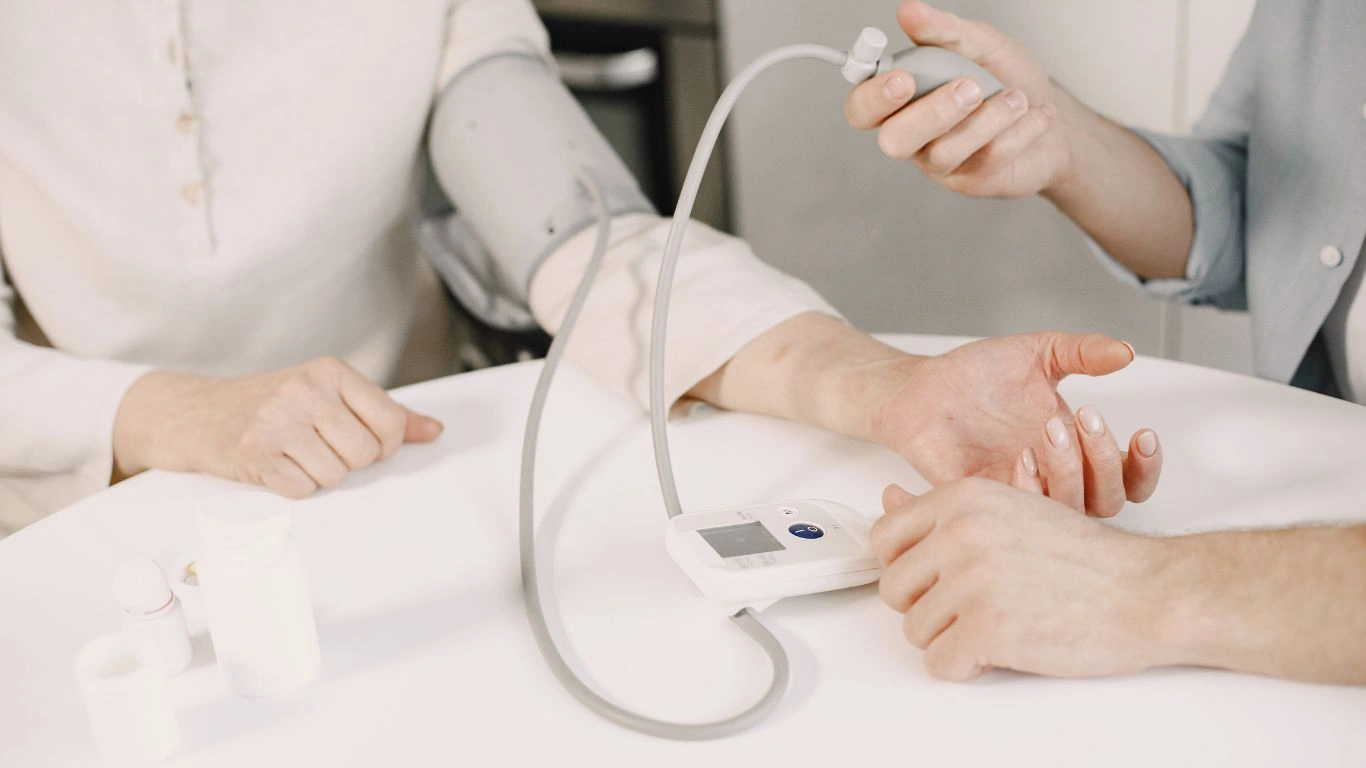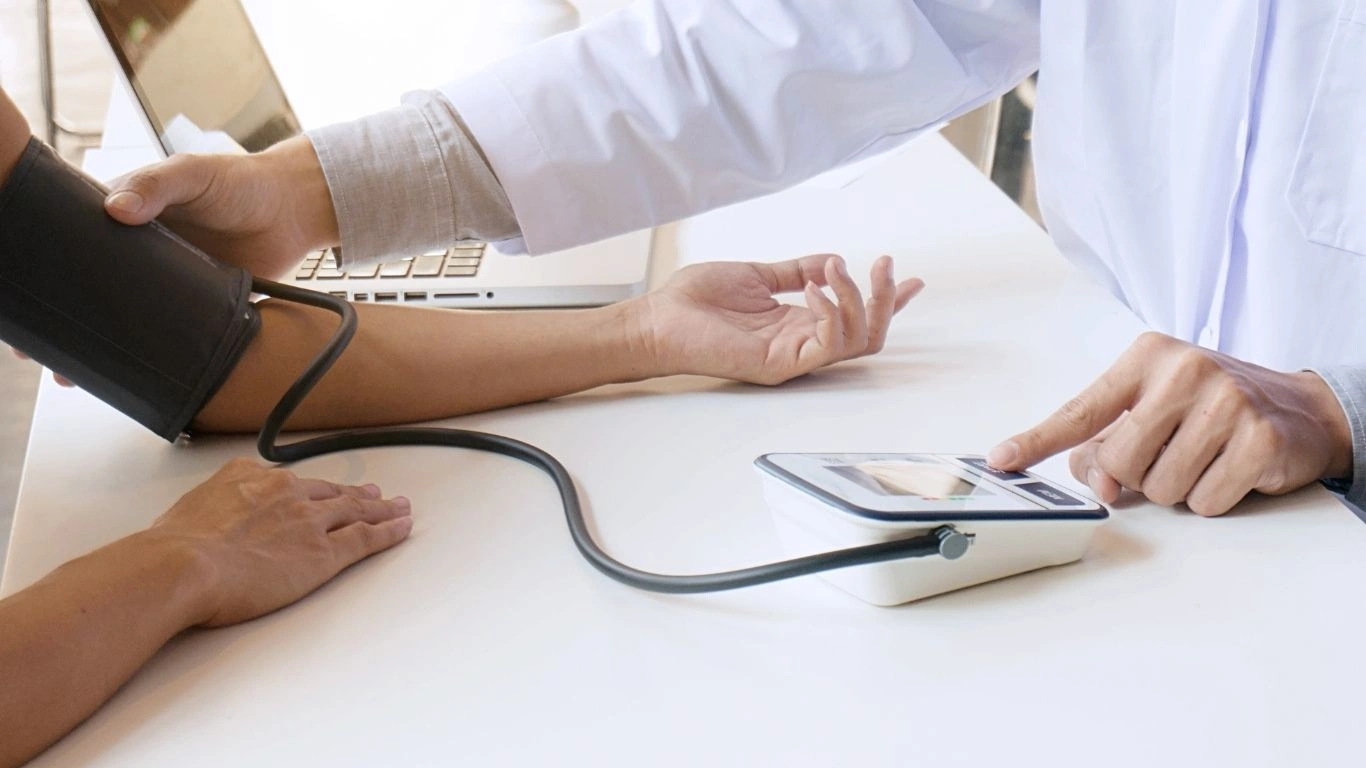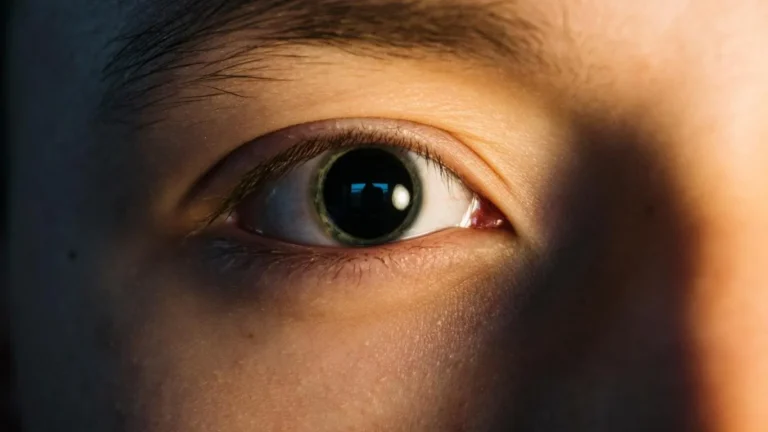How to Track Sodium Intake Effectively and Reclaim Your Health
As an Internal Medicine Physician specializing in Hypertension Management, I’ve seen firsthand the impact that sodium intake can have on blood pressure and overall cardiovascular health. One of the most common questions I get from patients is, “How do I track sodium intake effectively?” It’s a valid concern, given that too much sodium can lead to high blood pressure, heart disease, and other serious health issues. If you’re trying to manage hypertension or just live a healthier life, keeping an eye on your sodium intake is essential. In this article, I’ll walk you through practical, proven methods for tracking sodium in your diet and how small adjustments can make a big difference in your health.
Why Tracking Sodium Intake Is Important
First things first, why should we even care about tracking sodium intake? In simple terms, sodium is a mineral that plays a key role in regulating blood pressure, fluid balance, and nerve function. However, too much sodium in your diet can cause your body to retain excess water, which raises blood pressure. This is why it’s especially important for those of us dealing with hypertension or those at risk for it to keep an eye on our sodium consumption. Chronic high blood pressure (hypertension) can lead to heart attacks, strokes, kidney disease, and other serious health complications. So, managing sodium intake is not just about avoiding salt; it’s about taking control of your long-term health.

How Much Sodium Should You Be Consuming?
The American Heart Association recommends that adults limit their sodium intake to no more than 2,300 milligrams (mg) per day. However, most health experts suggest an ideal target of 1,500 mg for those at higher risk of hypertension, including people with existing high blood pressure, kidney disease, or heart problems. To put it into perspective, a single teaspoon of salt contains about 2,300 mg of sodium. It’s easy to see how quickly sodium can add up in our diets, especially with processed foods, restaurant meals, and convenience foods that tend to be loaded with sodium.
Practical Ways to Track Sodium Intake
Now that we understand the importance of tracking sodium, let’s talk about some practical ways to do so. You don’t need to obsessively count every grain of salt, but being mindful of how much sodium you’re consuming can be a game-changer. Here are some of the most effective methods I’ve shared with my patients over the years:
1. Read Nutrition Labels
This may seem like a no-brainer, but it’s worth emphasizing. Nutrition labels are your best friend when it comes to tracking sodium. Many packaged foods, including snacks, sauces, and even bread, can be sneaky sources of sodium. Always check the sodium content on labels, and pay attention to the serving size, because many packaged foods contain more than one serving. Keep an eye out for foods that list sodium in the ingredients—words like salt, sodium bicarbonate, and monosodium glutamate (MSG) all indicate sources of sodium.

2. Use a Sodium Tracking App
There are numerous apps available that help you track sodium intake, and some are even tailored specifically for managing hypertension. These apps often come with built-in databases of foods and can give you instant feedback on the sodium content in what you’re eating. Some apps even let you scan product barcodes to make tracking easier. While I’m not advocating for you to track every bite you eat, these apps can be really helpful when you’re starting out, and they’ll give you a better sense of where most of your sodium intake is coming from.
3. Cook More at Home
One of the easiest ways to take control of your sodium intake is by cooking more meals at home. Restaurant meals and takeout are often packed with sodium—sometimes with more than your entire day’s worth in a single meal. Cooking at home allows you to control how much salt you use. Instead of relying on salt for flavor, experiment with other herbs and spices like garlic, basil, oregano, and pepper. You’d be surprised at how delicious meals can be without adding extra sodium!
How to Recognize High-Sodium Foods
Identifying foods that are particularly high in sodium is an important part of tracking your intake. Here are some of the top culprits:
- Processed meats: Bacon, ham, sausages, and deli meats are often loaded with sodium for preservation.
- Ready-to-eat foods: Canned soups, frozen dinners, and packaged meals often have high sodium content.
- Snack foods: Chips, crackers, and pretzels can be unexpectedly high in sodium.
- Condiments and sauces: Soy sauce, ketchup, barbecue sauce, and salad dressings are notorious for adding sodium to meals.
- Canned vegetables and beans: While these are convenient, they can contain a lot of added salt for preservation.
4. Be Mindful of Restaurant and Takeout Meals
When eating out or ordering takeout, sodium can quickly sneak into your meal. Many restaurant dishes, especially fast food and chain restaurants, are prepared with a lot of salt. Don’t hesitate to ask for modifications when you order. For example, you can request no added salt or ask for sauces and dressings on the side. This small adjustment can significantly reduce your sodium intake.
How Sodium Affects Hypertension
If you’re managing hypertension, understanding the relationship between sodium and blood pressure is crucial. Sodium attracts water into your bloodstream, which increases the volume of blood, making your heart work harder to pump blood throughout your body. This increased workload raises blood pressure, which is why reducing sodium intake can be a powerful tool in controlling high blood pressure.

Tracking your sodium intake is not just about avoiding high blood pressure—it’s about taking control of your health and preventing other complications like kidney disease, stroke, and heart failure. If you’re not sure where to start, begin by reading labels, cooking at home, and being mindful of sodium-heavy foods. Over time, these small changes will add up, and you’ll likely notice improvements in how you feel, as well as your overall blood pressure readings.
How to Reduce Sodium Intake in Your Diet
Now that we’ve covered how to track your sodium intake, let’s dive into some practical ways to actually reduce it in your daily diet. This is where the real change happens. It’s easy to say, “I’m cutting back on sodium,” but putting it into practice is where many of us stumble. Trust me, I get it. As someone who’s been working in hypertension management for years, I’ve seen patients face this challenge, but with the right strategies, it can absolutely be done.
1. Choose Fresh, Whole Foods
The best way to limit your sodium intake is to eat more whole foods, like fresh fruits, vegetables, whole grains, and lean proteins. These foods are naturally low in sodium, which makes them the perfect foundation for your meals. Think of whole foods as your go-to source for nutrition—things like fresh fish, chicken, beans, leafy greens, berries, and sweet potatoes. Not only do these foods provide your body with essential nutrients, but they also keep your sodium intake in check without you having to think twice about it.

2. Swap Processed Snacks for Healthier Alternatives
If you’re anything like me, snacking can sometimes be your weakness. However, processed snacks, like chips, pretzels, and packaged cookies, are packed with sodium and often provide little nutritional value. The solution? Start swapping out these high-sodium snacks for healthier options. For instance, swap salty nuts for unsalted almonds, or try air-popped popcorn with your own seasoning. It’s all about finding alternatives that satisfy your cravings but won’t send your sodium levels through the roof.
3. Use Low-Sodium or Sodium-Free Alternatives
Many popular condiments, sauces, and seasonings are packed with sodium. Take soy sauce, for example—just a tablespoon can have over 1,000 mg of sodium! But don’t worry, there are plenty of low-sodium or sodium-free alternatives available. Opt for low-sodium soy sauce, or try alternatives like tamari or coconut aminos. The same goes for canned soups, broths, and even salad dressings. These products often have options that are lower in sodium or sodium-free. You’d be surprised how much flavor you can still get with just a little creativity and a focus on flavoring with herbs and spices.
Understanding the Impact of Processed Foods on Sodium Intake
If you want to truly lower your sodium intake, it’s essential to understand just how much of it comes from processed foods. In fact, up to 70% of the sodium we consume comes from packaged, processed, and restaurant foods, not the salt shaker on our table. It’s easy to overlook how much sodium is hidden in the foods we eat on a regular basis. That’s why I always stress to my patients the importance of knowing what’s in their food and looking at sodium content on labels.
Why Processed Foods Are Sodium Bombs
Processed foods, including packaged meats, frozen meals, and snacks, are often loaded with sodium for preservation. It’s part of what makes them last longer on store shelves, but it also makes them a huge contributor to high blood pressure. For example, a single serving of frozen pizza can contain anywhere from 500 mg to 1,000 mg of sodium or more. Combine that with other processed foods in your diet, and suddenly, your sodium intake is through the roof without you even realizing it.

How to Identify High-Sodium Processed Foods
When shopping for processed foods, always check the sodium content on the nutrition label. Look for foods that have less than 300 mg of sodium per serving. If the food has a high number, try to avoid it or look for lower-sodium alternatives. Another trick is to check the ingredient list for salt and sodium additives—things like sodium nitrate, sodium benzoate, and MSG are all signs that the food is high in sodium.
Eating Out While Managing Sodium Intake
Eating out doesn’t have to derail your efforts to track sodium. Yes, it’s challenging, but with some simple adjustments, you can still enjoy a meal out while sticking to your low-sodium goals. After all, who doesn’t enjoy dining out now and then? Here are some tips to help you keep sodium in check without feeling like you’re missing out.
1. Ask for No Added Salt
One of the easiest things you can do when dining out is to ask for your food to be prepared without added salt. Many restaurants add salt during the cooking process, so it’s a good idea to request that your dish be prepared without it. You can also ask for sauces and dressings on the side. This allows you to control how much you’re adding to your meal.
2. Choose Grilled, Roasted, or Steamed Dishes
Grilled, roasted, and steamed dishes tend to be healthier options because they’re often prepared without much added salt or sodium-laden sauces. Look for menu items that focus on lean proteins, fresh vegetables, and whole grains. Avoid items that are fried, breaded, or heavily sauced, as these are usually sodium-heavy.
3. Skip the Sides with High Sodium
When ordering sides, choose options that are lower in sodium. For example, ask for a side of fresh vegetables instead of fries, and opt for a baked potato without the toppings or a side salad with a low-sodium dressing. Many restaurants offer healthier alternatives if you just ask—sometimes you’ll be surprised at the choices they can offer.
How Sodium Affects Your Overall Health
In addition to its impact on blood pressure, sodium plays a larger role in your body’s overall health. Over time, excessive sodium intake can contribute to kidney disease, stroke, and heart failure, and it may even affect your bone health. The kidneys work hard to filter excess sodium from your body, and too much sodium can damage these organs, making it more difficult for them to function properly. Additionally, consuming too much sodium can increase the risk of stroke by contributing to high blood pressure, which is a leading cause of stroke.

By tracking your sodium intake and making small adjustments to your diet, you’re not just protecting your blood pressure—you’re protecting your entire body. The effort you put into reducing sodium will pay off in the form of better overall health, more energy, and a stronger cardiovascular system. So, don’t let sodium sneak up on you. With a little awareness and planning, you can make a big difference in how you feel every day.
How to Track Sodium Intake Effectively Over the Long Term
Alright, now that we’ve broken down how sodium impacts your body and practical ways to reduce it, let’s talk about staying consistent. Because let’s be real—anyone can make a change for a few days, but the real magic happens when you build habits that stick. That’s how you actually take control of your blood pressure and overall health. And yes, I’m speaking from experience—not just as a physician, but as someone who works with patients who’ve transformed their health one small change at a time.

1. Make Sodium Tracking a Routine
Let’s be honest: no one wants to track every bite forever. But getting into a rhythm for a few weeks can teach you a ton. Think of it like training wheels. Once you get familiar with sodium levels in your go-to foods, you won’t need to log every detail. I usually suggest using a sodium tracker app or even a simple notes app on your phone to jot down what you’re eating for a week or two. You’ll quickly notice trends—maybe it’s that lunch sandwich or that favorite salad dressing that’s pushing your sodium over the edge.
2. Create a Go-To Grocery List
One strategy I’ve seen work wonders is having a reliable grocery list filled with low-sodium staples. Stocking your pantry and fridge with good options means fewer decisions later. Here are a few of my favorite low-sodium basics I often recommend to patients:
- Low-sodium canned beans and vegetables (or fresh/frozen with no added salt)
- Whole grains like quinoa, brown rice, and oats
- Fresh fruits and vegetables (nature’s original low-sodium foods!)
- Lean, unprocessed meats and plant-based proteins like lentils
- Herbs, spices, lemon juice, and vinegar for flavor without the salt
Once you’ve got your go-to items down, meal planning becomes less of a chore and more of a rhythm. And hey, you’ll probably save money and avoid those last-minute takeout temptations too.
3. Don’t Rely Solely on Taste
This one’s tricky. Our taste buds get used to salty food, so we don’t always notice how salty something really is. The good news? They can *retrain.* I’ve had patients who thought low-sodium food was bland at first, but within a few weeks, they started enjoying it. Some even found their old favorites way too salty. Give your palate time to adjust—your body will thank you for it.
How to Read Between the Lines on Food Labels
Here’s where your detective skills come in. Food labels can be sneaky, and manufacturers love using buzzwords that sound healthy. Just because something says “light” or “heart-healthy” doesn’t mean it’s low in sodium. Here are a few things to watch out for when reading labels:

- Check the Serving Size: The sodium amount listed is per serving, and often, packages contain more than one.
- Look for 140 mg or Less: Foods with 140 mg of sodium or less per serving are considered low sodium by FDA standards.
- “Reduced Sodium” Doesn’t Mean Low: It just means it has 25% less sodium than the original version—which could still be high.
Being label-savvy takes practice, but it makes a huge difference. Once you get the hang of it, you’ll be able to scan a package in seconds and know whether it’s worth buying.
Helpful Tools for Long-Term Success
If you’re serious about managing sodium and your blood pressure, it’s worth using a few tools and resources to stay on track. Here are a few I often recommend:
- Food Tracking Apps: Try MyFitnessPal, Cronometer, or Yazio. These apps allow you to track sodium and set daily goals.
- Smart Kitchen Scale: Useful if you’re portioning out snacks or meals and want to get accurate readings.
- Blood Pressure Monitor: Monitoring your BP at home helps you see how dietary changes are affecting your numbers. It’s super motivating when you see that drop!
And of course, keep up with regular check-ins with your healthcare provider. As a physician, I can tell you those numbers—your blood pressure, lab results, etc.—tell an important story about how your lifestyle changes are working.
Support and Mindset Make All the Difference
This journey isn’t just about numbers—it’s about feeling better, having more energy, and being in control of your health. I always remind my patients that setbacks are normal. Maybe you have a salty meal out or fall off your routine for a week. It’s okay. The goal isn’t perfection, it’s consistency. The more often you choose the lower-sodium option, the more impact you’ll have.
Also, don’t underestimate the power of community. Whether it’s a friend, family member, or even an online group, having someone to share your progress and challenges with can make this whole thing feel less isolating and more doable. I’ve seen people succeed not just because they had the perfect food plan—but because they felt supported and empowered to make changes.
Resources and Expert Guidance
If you’re looking for more trusted information or tools to support your sodium-tracking journey, check out some of these reliable resources:
They offer everything from recipe ideas to blood pressure tracking tools, and many even break down how to read nutrition labels or cook with less salt. If you’re serious about taking care of your heart, they’re great places to start learning more.
Disclaimer
This article is intended for informational purposes only and should not be taken as medical advice. Always consult with your physician, registered dietitian, or a qualified healthcare provider before making any major changes to your diet or lifestyle—especially if you have a health condition like hypertension, kidney disease, or heart failure. Every person’s health needs are unique, and what works for one may not work for another.

Dr. Gwenna Aazee is a board-certified Internal Medicine Physician with a special focus on hypertension management, chronic disease prevention, and patient education. With years of experience in both clinical practice and medical writing, she’s passionate about turning evidence-based medicine into accessible, actionable advice. Through her work at Healthusias.com, Dr. Aazee empowers readers to take charge of their health with confidence and clarity. Off the clock, she enjoys deep dives into nutrition research, long walks with her rescue pup, and simplifying medical jargon one article at a time.






